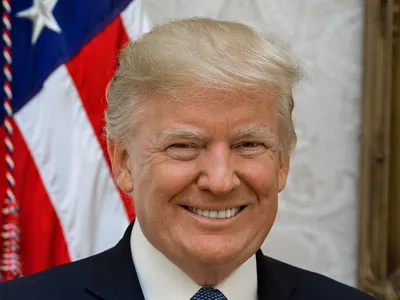
Donald Trump, the 45th president of the United States, has been known for his unconventional and often controversial style of leadership. One significant aspect of his presidency involved his conversations and interactions with executive leaders both within the U.S. government and on the global stage. These dialogues shaped many of his policies and helped define his administration’s approach to foreign relations, trade, and governance.
### Conversations with Executive Leaders in the U.S.
As a businessman-turned-politician, Trump often approached conversations with executives—whether in government or business—using strategies honed in the private sector. His direct and often transactional style was evident in meetings with leaders of major corporations, governors, and agency heads.
Trump frequently emphasized the importance of economic growth, deregulation, and tax cuts during these discussions. A key element of his administration was fostering what he saw as a more business-friendly environment, and his meetings with CEOs often focused on job creation, the promotion of American manufacturing, and reducing trade deficits. In many cases, Trump leveraged his position to pressure corporations into keeping jobs within the U.S., as seen in his interactions with companies like Carrier and Ford.
One prominent example of Trump’s engagement with an executive leader occurred in his frequent talks with then-Fed Chair Jerome Powell. These discussions were marked by tension, as Trump criticized Powell for not lowering interest rates quickly enough, reflecting his desire to stimulate economic growth to boost market performance.
### Conversations with International Executive Leaders
Trump’s conversations with international executive leaders attracted significant media attention due to his unique, sometimes unpredictable style. His approach to diplomacy was frequently marked by a blend of personal rapport, economic pragmatism, and a willingness to challenge long-standing norms.
A notable example of this was Trump’s meetings with Kim Jong-un, North Korea’s leader. Breaking from traditional U.S. foreign policy, Trump became the first sitting U.S. president to meet with a North Korean leader. The historic summits in Singapore and Vietnam were aimed at denuclearization and improving relations between the two countries. Although substantive progress was limited, these conversations were emblematic of Trump’s belief in direct, leader-to-leader negotiations.
Similarly, Trump’s relationships with Russian President Vladimir Putin and Chinese President Xi Jinping drew global scrutiny. With Putin, Trump often appeared more conciliatory, raising concerns among critics who believed he was too lenient toward Russia. His private meetings with Putin, especially during the Helsinki summit, left many wondering about the exact nature of their conversations, as few details were disclosed.
In contrast, Trump’s conversations with Xi Jinping were marked by a mix of praise and conflict. Initially, Trump hailed his “great relationship” with Xi, but as the U.S.-China trade war intensified, the tone of their interactions shifted. Trump frequently used tariffs and threats of further economic penalties as leverage, seeking to renegotiate trade terms more favorable to the U.S. Despite these pressures, Trump and Xi maintained communication throughout their respective terms, highlighting the critical nature of the U.S.-China relationship.
### Style and Impact of Trump’s Conversations
Trump’s conversations with executive leaders often had a transactional tone. His background in real estate and business negotiations seemed to inform his approach to diplomacy and executive-level talks. He frequently used praise, criticism, and promises of economic benefits or penalties to achieve his goals. However, this approach led to mixed outcomes.
On one hand, his directness was praised by some for cutting through bureaucracy and delivering results. On the other hand, critics argued that his disregard for diplomatic protocols and traditional norms often alienated allies and weakened international alliances. This was evident in conversations with NATO leaders, where Trump repeatedly demanded that member countries increase their defense spending, leading to strained relations within the alliance.
Furthermore, Trump’s informal and often impromptu communications, especially through his use of social media, blurred the lines between official dialogue and public posturing. His tweets frequently complicated ongoing discussions with leaders, making his conversations with executive figures even more unpredictable.
### Conclusion
Donald Trump’s conversations with executive leaders—both in the U.S. and internationally—were defining features of his presidency. His approach was marked by a mix of personal diplomacy, economic pragmatism, and a willingness to break from established norms. While his direct style yielded some results, it also generated controversy and unpredictability in international and domestic affairs. As a result, Trump’s legacy in terms of leadership and diplomacy will likely be debated for years to come, reflecting the broader impact of his unorthodox approach to executive conversations.

Leave a Reply